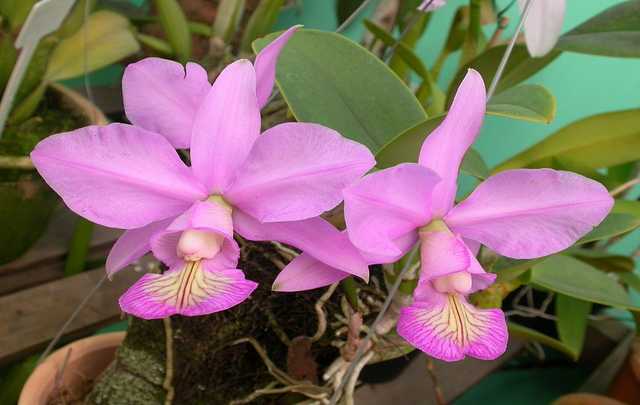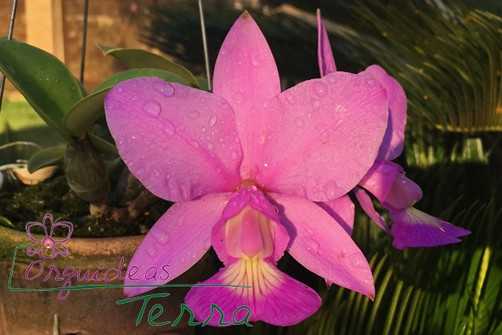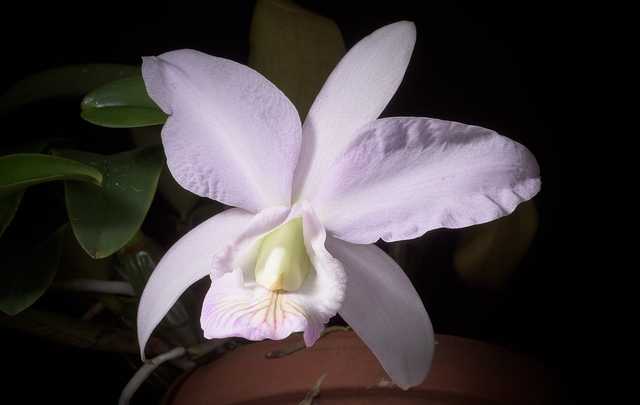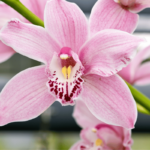The Cattleya nobilior is one of the most beautiful and satisfying orchids to cultivate.
This orchid stands out among orchid enthusiasts for several reasons:
- Large flowers
- Strong and beautiful colors
- Pleasant and lasting fragrance
These characteristics can vary depending on the plant.
This cattleya was discovered in 1883 by the botanist Reichenbach, one of the greatest orchid enthusiasts in history.
If you have a Cattleya nobilior or are thinking of getting one, keep reading as you will learn about its history, characteristics, and especially cultivation.
Learn How to Achieve Super Blooms on Your Orchids
🛑 If you love orchids and you're tired of not being able to make them bloom...
Then, know that thousands of beginner growers are achieving beautiful flowers on their orchids by following this method.
Click the button below to have beautiful orchids with show-worthy flowers every year. ⤵
Cultivation of Cattleya nobilior
For many growers, this is a challenging orchid to cultivate, especially to make it bloom, but you can change that.
The Cattleya nobilior, like other orchids, requires some special care, and if you provide them, you will achieve incredible blooms.
Below you will learn exactly what these cares are, but first a tip.
Where to Plant
One of the first steps to cultivate any orchid is to know where to plant it.
In the case of Cattleya nobilior, you won’t have many problems with that.
This is an orchid that adapts very well, and one of the only places where it cannot be placed is in the ground.
See below some places where you can plant it:
- Trees
- Tree bark
- Clay pots (might not be a good option as they filter water and retain many mineral salts).
- Logs or branches
- Wall
- Various other places
As this is an epiphytic orchid, you can hang it somewhere where it can attach itself.
Just make sure the place where it is located does not retain too much moisture.
NOTE: the substrate, if used, must ensure good root aeration and excellent drainage.
Watering
Without a doubt, watering is the most complicated factor in cultivating this orchid.
Unlike several other orchids like phalaenopsis, this orchid needs a slight water stress just before flowering.
But before we talk about that, you need to understand why this happens.
The Cattleya nobilior lives in places that have 2 main periods during the year, which are:
- Dry period (winter)
- Rainy period (summer)
For you to make it bloom, you have to imitate these periods in your cultivation place.
If you can do that, the chance of your Cattleya nobilior blooming increases a lot.
To get the right amount of watering for this orchid, follow these tips:
Just before flowering, during the coldest months provide slight water stress.
- During this period, you will lightly mist your orchid every 10 days.
- Avoid letting it get rained on.
If you can do this, it will bloom, and right after flowering, start watering it normally.
- You will water as soon as the substrate dries.
- Be careful with excess water, as it can cause your orchid’s roots to rot.
- Water after sunset, as this is when it absorbs water.
These are the care you should have with your orchid’s watering.
Temperature and Lighting
In its natural habitat, this orchid is accustomed to large temperature variations between day and night.
That is, during the day, the temperature should be higher than at night.
Cultivate it at moderate temperatures and do not let it go beyond extremes of 15°C to 40°C (59°F to 104°F).
- If it is lower than 15°C (59°F), the cold can burn its leaves.
- If it gets above 40ºC (104°F), the heat can cause black spots and burns on the leaves and the whole plant.
Regarding lighting, it should be indirect; normally, a shading of 50% can be considered ideal.
Fertilization
Fertilization is the way to replace the nutrients that your plant would receive in nature. It is divided into two types, natural fertilizers and chemical fertilizers.
Natural fertilizers are weaker and take longer to be absorbed by orchids; usually, bokashi is the most used.
Chemical fertilization is stronger and faster but can be easily used by beginners.
If you opt for chemical fertilization, use a balanced fertilizer like NPK 20 20 20, and be very careful with excess fertilization.
Preventing Pests
Below are some tips that can be very useful when preventing pests and diseases in your Cattleya nobilior.
- Leave it in a well-ventilated place.
- Provide moderate humidity (it does not like very high humidity).
- Whenever you prune your orchid, use sterilized scissors.
- Apply an insecticide and a fungicide to your orchid monthly to prevent these problems.
Characteristics
Right after being described by Reichenbach, this orchid was considered a hybrid of Cattleya walkeriana, but this mistake was corrected later.
Known as Queen of the Cerrado, the name nobilior comes from Latin and means nobler, being a provocation to Cattleya walkeriana.
NOTE: want to learn more about orchid cultivation? Then download our complete guide.
A curiosity is that the Cattleya nobilior is primarily a Brazilian orchid.
It can be found in the following states:
- Mato Grosso do Sul
- Mato Grosso
- Bahia (southwest)
- Maranhão (south)
- Rondônia
- Goiás
- Tocantins
If you are going on an excursion and want to look for this orchid in its natural habitat, stay close to watercourses and look on top of trees because it is an epiphytic orchid.
Do You Want to Learn How To Keep Your Orchids Healthy And Ready to Bloom Every Year?
So, I prepared a complete guide, step by step and illustrated, that will show you:
• The secrets to getting beautiful flowers every year
• How to fight and identify pests and diseases on your orchids
• THE MAGIC SUBSTANCE for orchids and how to use it
• And much, much more.
The great news is that the manual is now available at a super discount!!
But beware, it's only for the first buyers.
Click on MORE INFORMATION below and discover the secrets to show-worthy flowers. 👇
Curiosities
The Cattleya nobilior is recognized for its beauty wherever it goes.
It is widely used in hybrid production, especially during its flowering, where its gene becomes dominant.
In 2019, its beauty was recognized by the state of Mato Grosso do Sul, where it was established as the symbol flower of this state.
“It became a symbol because of the work that has been done here for over 20 years by us. We are the only state that has a specific exhibition for Cattleya nobilior. Our exhibition, at the Brazil level, is among the two or three that are held. And something very important: for seven consecutive years, the exhibition has space in the largest orchid magazine in Japan” – Wenceslau, cultivator with more than 2,000 orchids in an interview with Correio do Estado.
In addition to being the state flower of MS, this orchid also has some varieties.
- Alba
- Coerulea
- Lilacina
- Albascens
- Concolor
- Striated
- Rubra
- Smooth
- Vinicolor
- Venosa
- Flamea
- Semi-alba
NOTE: if you don’t know what orchid species are, see this article.
Flowers
Finally, let’s talk about the main characteristic of this Cattleya, its flowers.
This is an orchid that blooms especially during spring, with its flowers lasting an average of 30 days. But this date depends a lot on when the cold weather appears; it usually blooms between June and October, and the peak of flowering occurs in August.
Usually, these orchids produce between 2 to 3 flowers ranging from 10 to 13 cm (3,9 to 5,1 inches) in width.
A TIP: the Cattleya nobilior supernova can have larger flowers than other Cattleyas of the same species, so it is an excellent option to grow.
As for colors, they can be very varied, but the most common color is purple. Other possible colors are:
- White
- Pink
- Purple almost blue
Its flowers come out in leafless bulbs, probably because its genes do this so that it saves energy because it blooms during the dry season.
Conclusion
The Cattleya nobilior is not an orchid easy to cultivate, but I am sure that if you follow the tips in this article, you will be able to cultivate it.
Remember to be very careful with watering and also with the temperature because they are very important for this plant.
If you liked this article and want to learn more about Cattleyas, see these articles:
- Cattleya Schilleriana – Photos, Characteristics and Care
- Cattleya Labiata – Characteristics and How to Care
- Spots on Orchid Leaves – Meanings and Treatments
Also see our other articles about orchids:
- Spots on Orchid Leaves – Meanings and Treatments
- Ludisia the Jewel Orchid – How to Care in 7 Simple Steps
- Dendrobium Nobile – How to Care, Photos and Curiosities
- Monkey Face Orchid – Photos, Curiosities and Much More
- Oncidium (Dancing-lady Orchid) – How to Care in 9 Steps
- Miltonia Orchids – Characteristics and How to Care
- Epidendrum Orchids – Photos, Species and How to Care
And now it’s your turn, help us reach more growers, share this article on your social networks by clicking on the icons below:



















